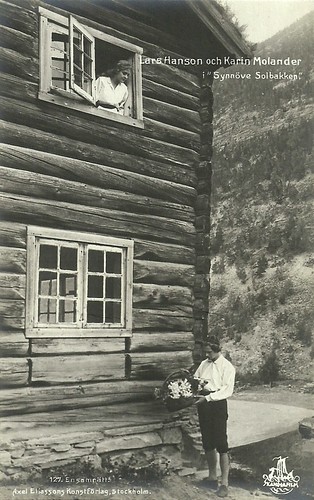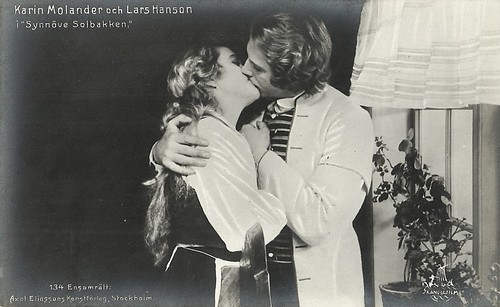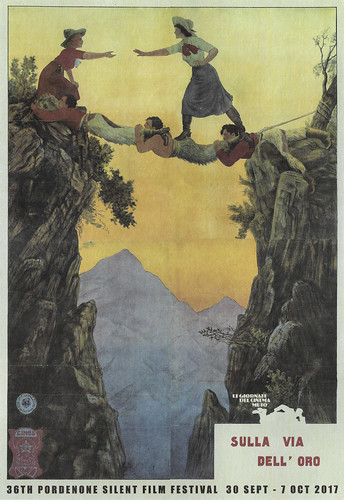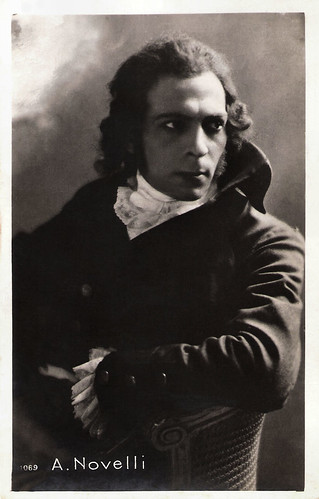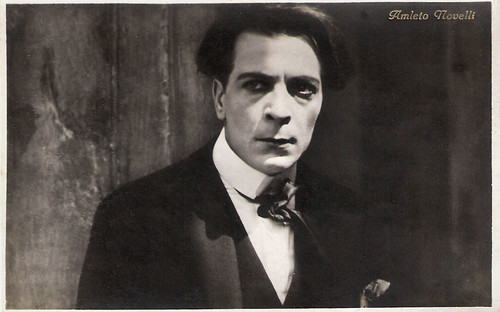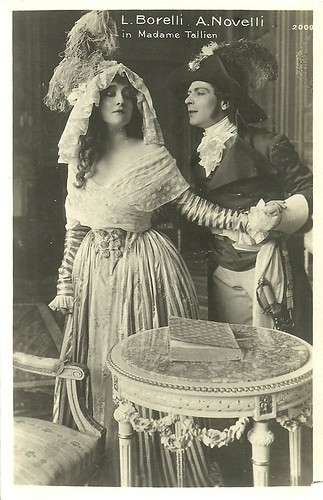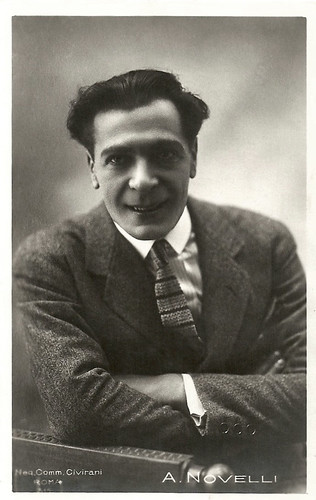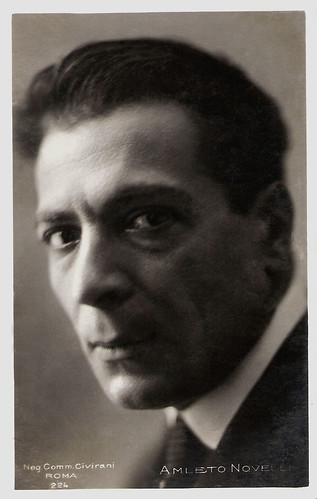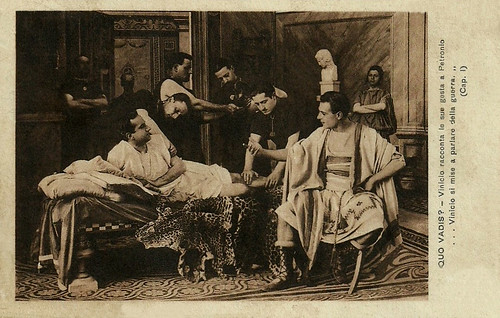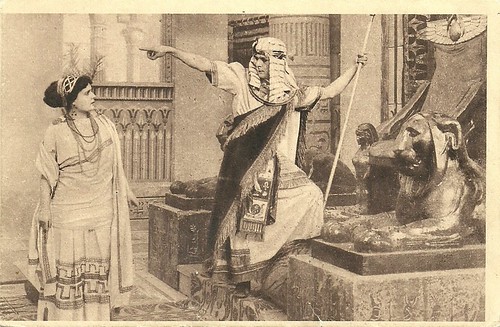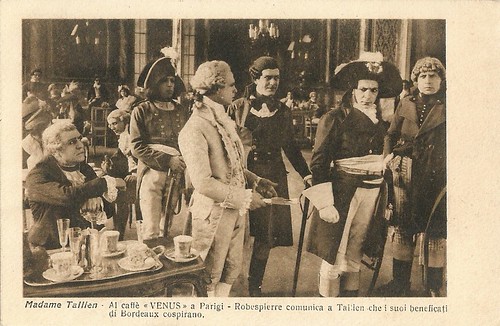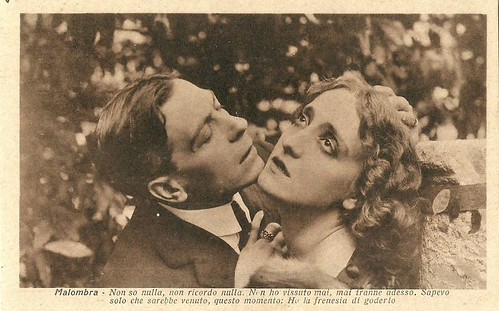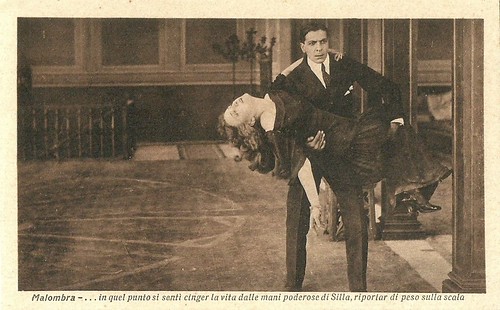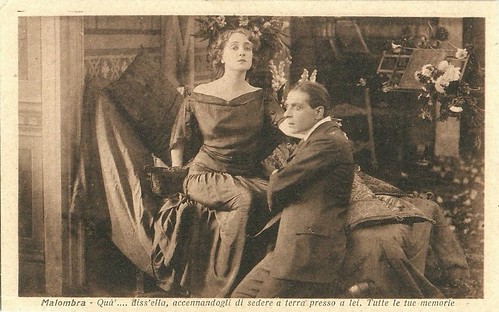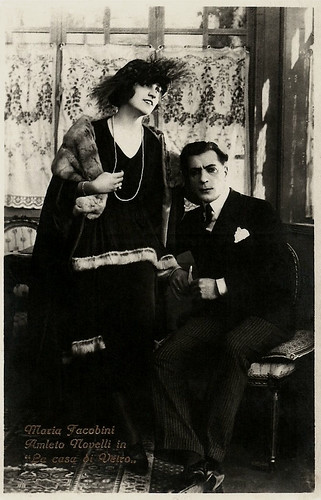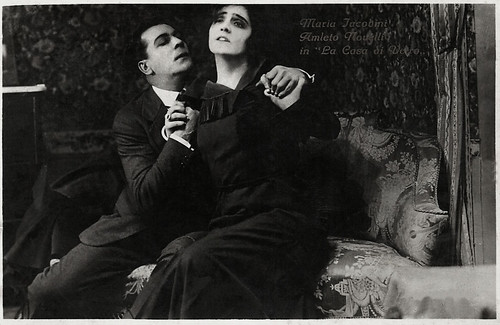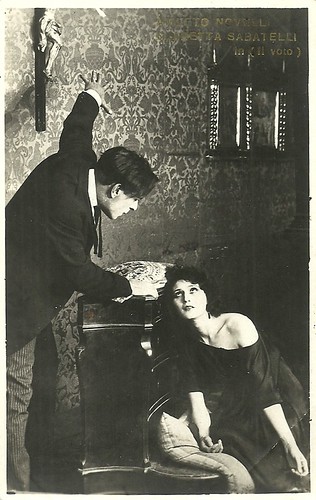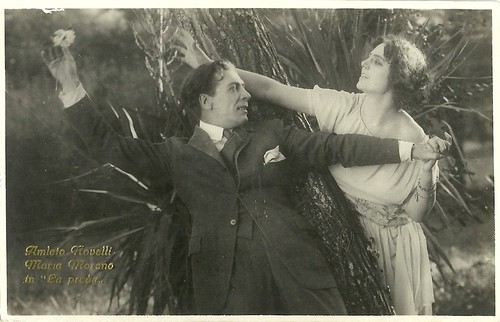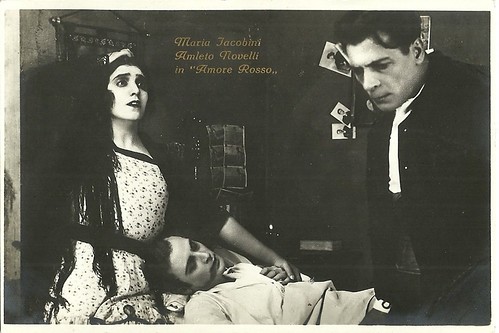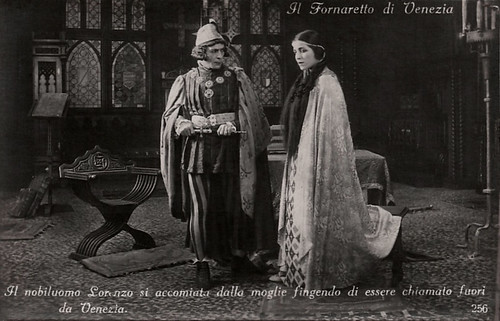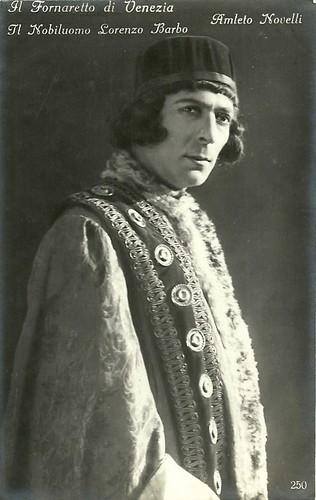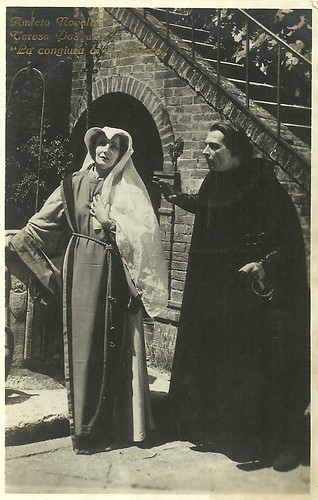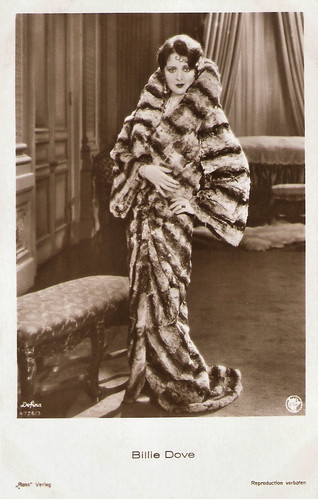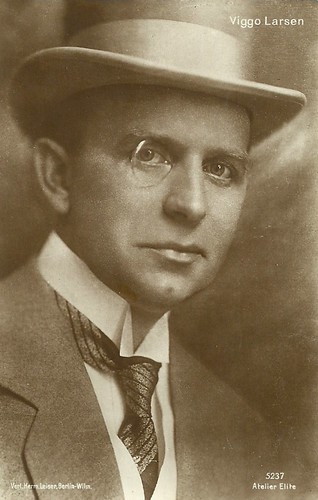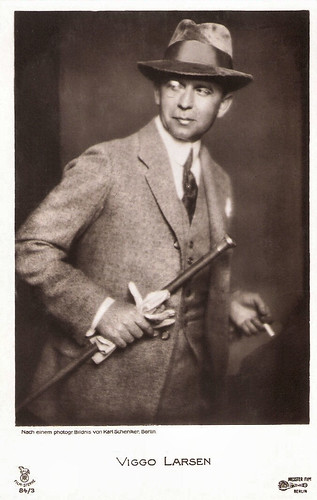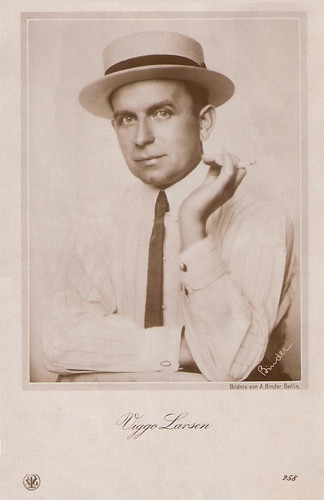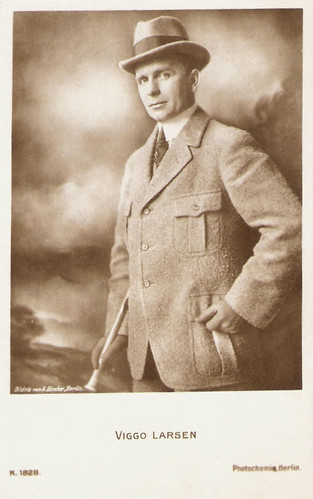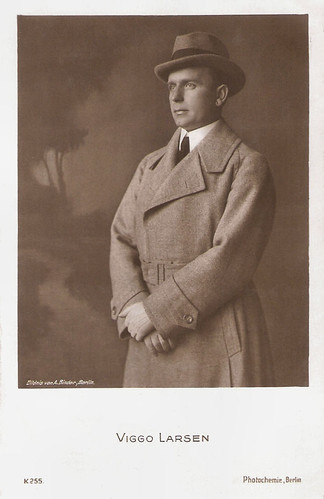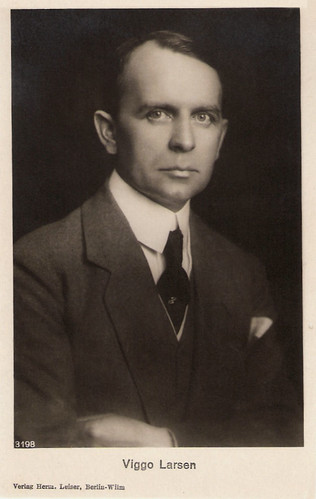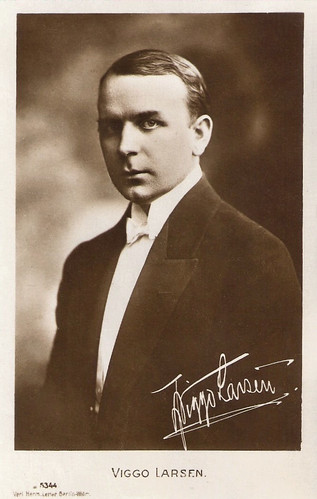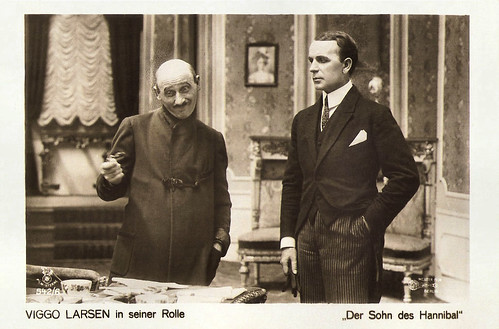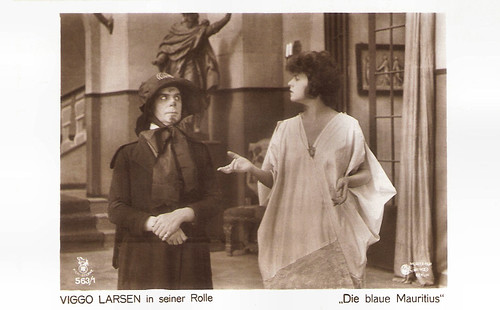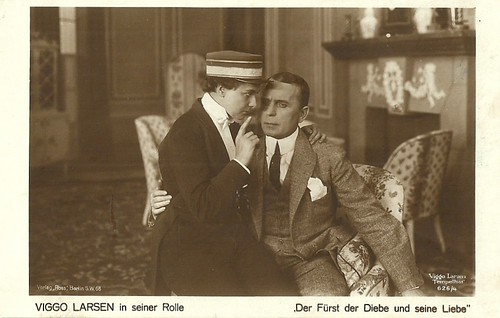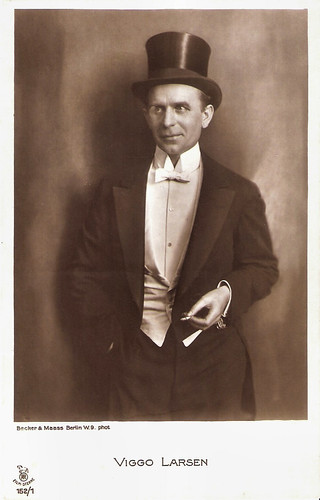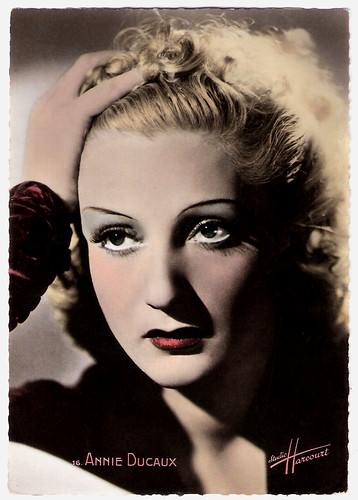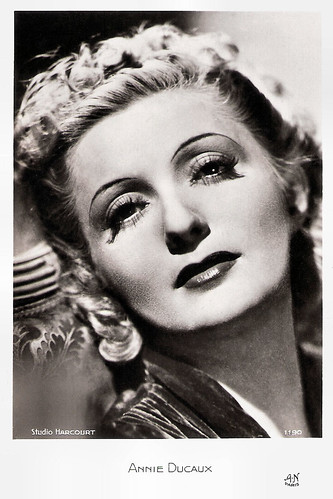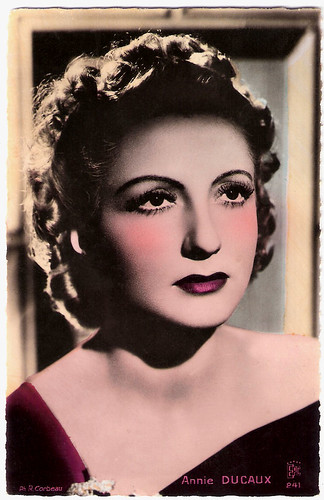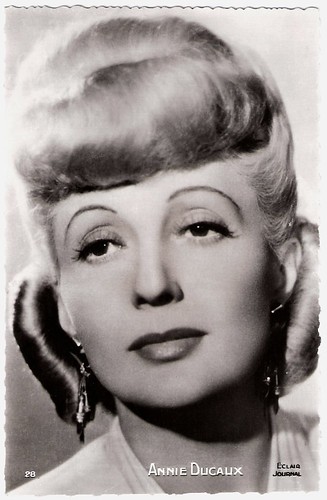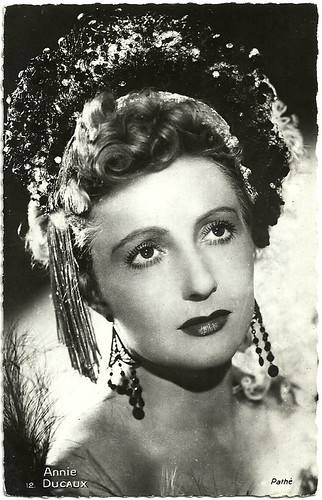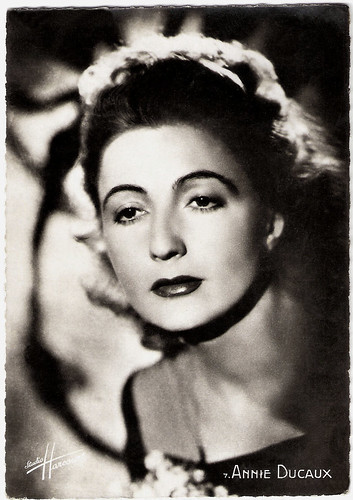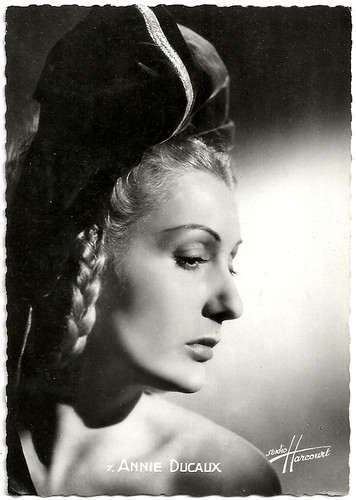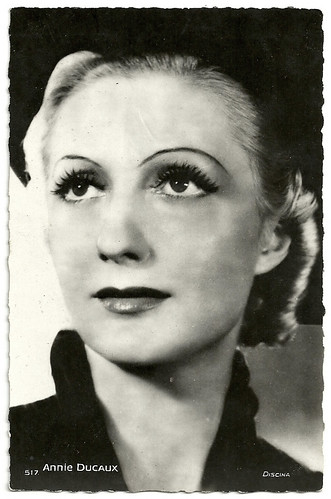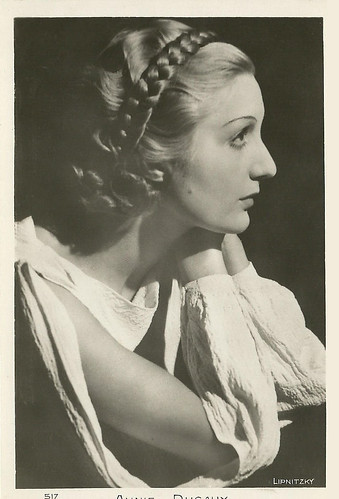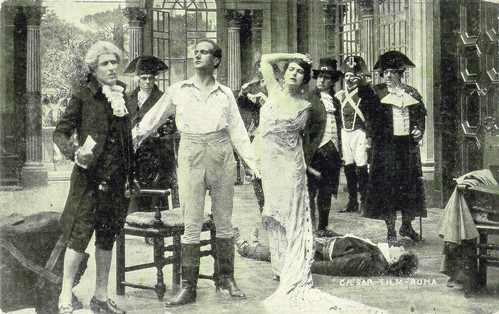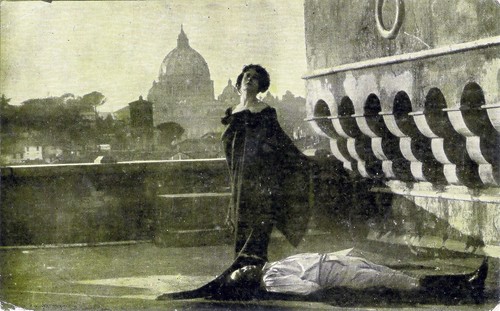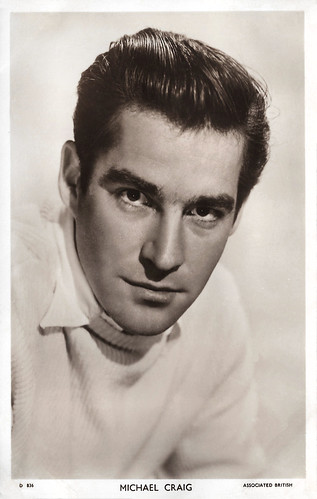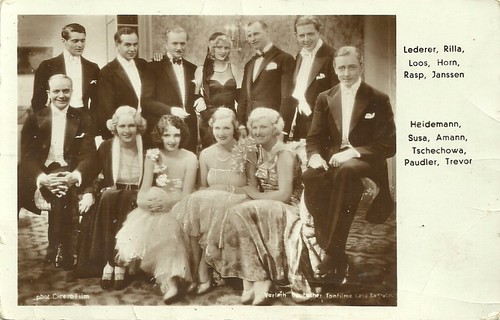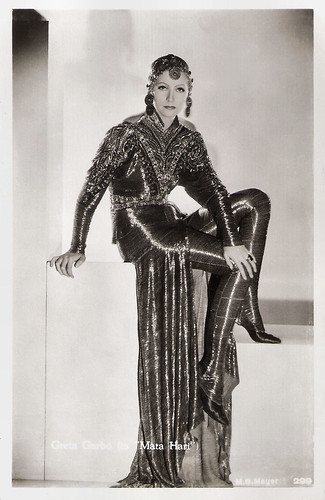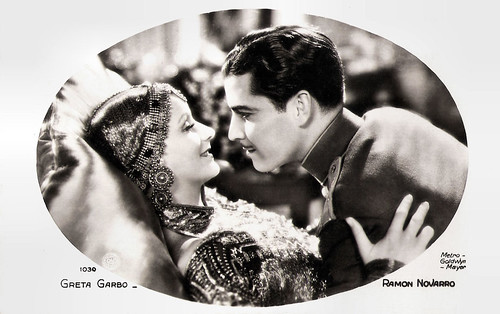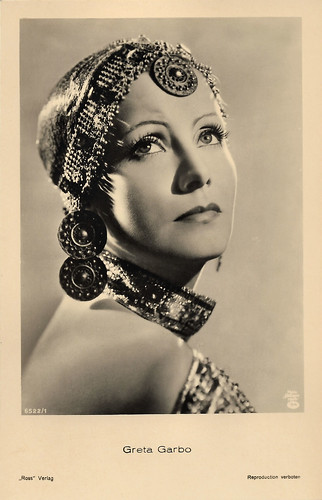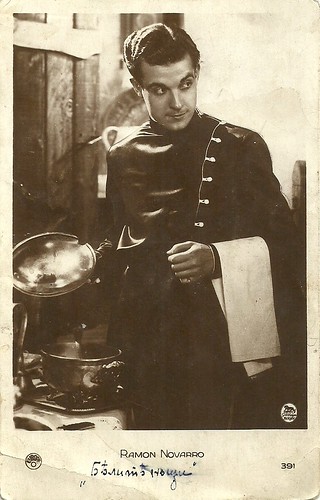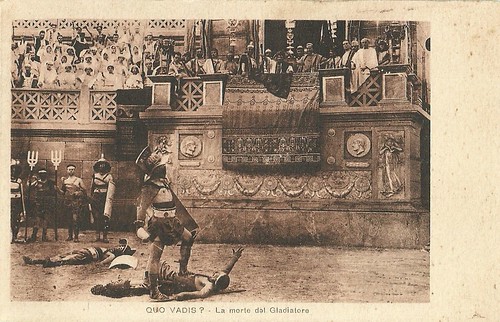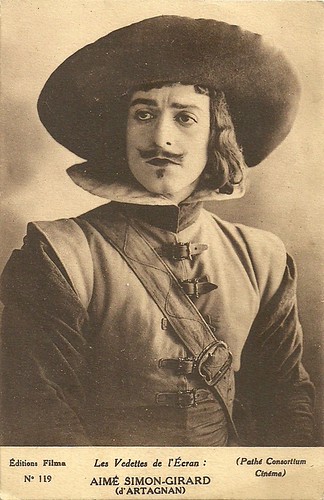This week we follow the Le Gionate del Cinema Muto in Pordenone, Italy. One of the programs is 'Beginnings of the Western: The European Production'. We generally associate the Western with the American cinema, but in the early years of the cinema there were European Westerns too. The French Western was often filmed in the Camargue, in the South of France, and Joë Hamman (1883-1974) was the French equivalent of the film cowboy. Joë had a long ranging career from 1907 to 1967, and besides his acting career he was also an affluent film director.
![Joë Hamman]()
French postcard, Editions Cinémagazine. no. 118.
Joë Hamman aka Joe Hamman (not to be confused with American cinematographer-producer Joe Hamann) was born as Jean Paul Arthur Hamman in Paris, France, in 1883. His father was a Dutch expert in painting, his mother a former lady’s companion of Empress Eugénie. Hamman studied in Paris and London before going to art school in Paris. He became a noted water colourist, but he chose a different career.
When Jean was six, the circus of Buffalo Bill alias William Cody came to Paris, but young Hamman was not allowed to go. He had to wait until he was 21 and meet Cody, when his father took him on a business trip to America in 1904.
Hamman and Cody met privately, became friends, and Hamman visited Cody’s North Plate house in Nebraska, meeting the extras of Cody’s wild west show, and drawing watercolours for local rangers. At a ranch in Montana, Jean Hamman learned to ride, was engaged as a cowboy, and learned to break and gather horses.
He also visited the Pine Ridge reservation in Dakota, and met Spotted Tail, war lieutenant of Indian chief Red Cloud, who donated him a buckskin war costume. Autumn 1904, he returned to Paris to do his military service, during which he staged a coach attack. When in 1905 Cody’s circus came over, Hamman was invited to join and participated in the French tour of Buffalo Bill. And Jean became Joë Hamman.
![André Deed]()
André Deed. French postcard by Edition Pathé Frères. Photo: X.
In 1907, Joë Hamman started out in the cinema as both actor and director of the short silent Le desperado/The Desperado (Joë Hamman, 1907). He followed his debut with performances in some 40 more short Westerns until early 1914.
These shorts included Un drame mexicain/A Mexican Drama (Joë Hamman, 1909), Un drame au Far West/A Far West Drama (Joë Hamman, 1909), and Les aventures de Buffalo Bill/The Adventures of Buffalo Bill (Joë Hamman, 1911).
For studio Éclair, he starred in the tree-part serial Le vautour de la Sierra/The Vulture of the Sierra (Victorine-Hipolyte Jasset, 1909), but most of the short Westerns with Hamman were produced by Gaumont.
A successful example was Le railway de la mort/The Railway of Death (Jean Durand, 1912) with Gaston Modot. From 1910 on, director Jean Durand specialised in the genre at Gaumont, though director Léonce Perret also shot some of the Gaumont Westerns.
Gaston Modot is nowadays best known as a comedian, but he was often Hamman’s antagonist in the Gaumont Westerns. Hamman directed 10 early shorts himself. He also worked for the Eclipse company in different genres, such as the adventure film L’ile d’épouvante/The Island of Terror (1911) and the Western La ville souterraine/The Subterranean City (1913).
![Abel Gance]()
Abel Gance. French postcard by Cinémagazine-Edition, no. 473. Photo: publicity still for Napoléon (Abel Gance, 1927), with Gance himself as Saint Just.
During the First World War, Joë Hamman's film acting and directing came to a halt. In 1921 he returned as an actor-director with the short adventure film Le gardian/The Rancher (Joë Hamman, 1921). In Tao (Gaston Ravel, 1923), he appeared with other pre-war actors such as comedian André Deed. He had the male lead as Chevalier de Mallory in the costume drama L’enfant roi/The Child King (Jean Kemm, 1923), opposite Andrée Lionel as queen Marie Antoinette.
The next year followed supporting parts in Le vert galant/The Don Juan (René Leprince, 1924), Les fils du soleil/The Sons of the Sun (René le Somptier, 1924), and the detective film Le stigmate/The Stigma (Louis Feuillade, Maurice Champreux, 1924) with Jean Murat.
After a break in 1925 followed six films in 1926: Sa petite/His Little Girl (Routier-Fabre, 1926), Le capitaine Frascasse/Captain Fracasse (Henri Desfontaines, 1926), La fille des pachas/The Daughter of the Pacha (Joë Hamman, Adrien Caillard, 1926), Lady Harrington (Hewitt Claypoole Grantham-Hayes, Fred LeRoy Granville, 1926), and Le berceau de Dieu/The Cradle of God (Fred LeRoy Granville, 1926).
The latter was a religious drama starring Léon Mathot in which Hamman played a triple role of Abner, Pharaoh and Confucius. After Sous le ciel d’Orient (Fred LeRoy Granville, 1927), opposite his old buddy Gaston Modot, Hamman ended his silent film career with a bit part as Baskytt in Abel Gance's famous epic Napoléon (1927).
![Luis Trenker]()
Luis Trenker. German postcard by Ross Verlag, no. 685, 1919-1924. Photo: Atelier Yva, Berlin.
When sound cinema arrived, Joë Hamman made a comeback and played leads in several early sound films. He was the title character in Le roi des aulnes/The Erl KingJohan Wolfgang Goethe
’s ballad. 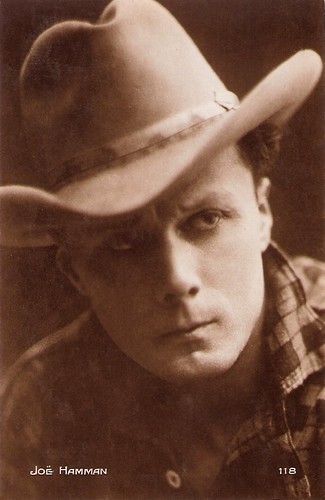
French postcard, Editions Cinémagazine. no. 118.
Buffalo Bill
Joë Hamman aka Joe Hamman (not to be confused with American cinematographer-producer Joe Hamann) was born as Jean Paul Arthur Hamman in Paris, France, in 1883. His father was a Dutch expert in painting, his mother a former lady’s companion of Empress Eugénie. Hamman studied in Paris and London before going to art school in Paris. He became a noted water colourist, but he chose a different career.
When Jean was six, the circus of Buffalo Bill alias William Cody came to Paris, but young Hamman was not allowed to go. He had to wait until he was 21 and meet Cody, when his father took him on a business trip to America in 1904.
Hamman and Cody met privately, became friends, and Hamman visited Cody’s North Plate house in Nebraska, meeting the extras of Cody’s wild west show, and drawing watercolours for local rangers. At a ranch in Montana, Jean Hamman learned to ride, was engaged as a cowboy, and learned to break and gather horses.
He also visited the Pine Ridge reservation in Dakota, and met Spotted Tail, war lieutenant of Indian chief Red Cloud, who donated him a buckskin war costume. Autumn 1904, he returned to Paris to do his military service, during which he staged a coach attack. When in 1905 Cody’s circus came over, Hamman was invited to join and participated in the French tour of Buffalo Bill. And Jean became Joë Hamman.
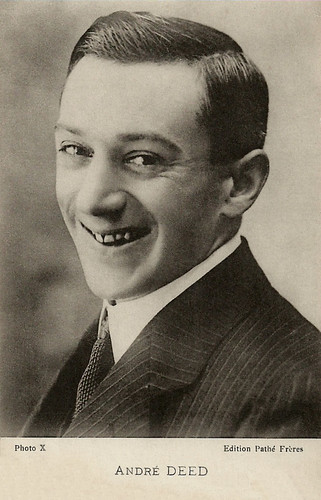
André Deed. French postcard by Edition Pathé Frères. Photo: X.
Le Desperado
In 1907, Joë Hamman started out in the cinema as both actor and director of the short silent Le desperado/The Desperado (Joë Hamman, 1907). He followed his debut with performances in some 40 more short Westerns until early 1914.
These shorts included Un drame mexicain/A Mexican Drama (Joë Hamman, 1909), Un drame au Far West/A Far West Drama (Joë Hamman, 1909), and Les aventures de Buffalo Bill/The Adventures of Buffalo Bill (Joë Hamman, 1911).
For studio Éclair, he starred in the tree-part serial Le vautour de la Sierra/The Vulture of the Sierra (Victorine-Hipolyte Jasset, 1909), but most of the short Westerns with Hamman were produced by Gaumont.
A successful example was Le railway de la mort/The Railway of Death (Jean Durand, 1912) with Gaston Modot. From 1910 on, director Jean Durand specialised in the genre at Gaumont, though director Léonce Perret also shot some of the Gaumont Westerns.
Gaston Modot is nowadays best known as a comedian, but he was often Hamman’s antagonist in the Gaumont Westerns. Hamman directed 10 early shorts himself. He also worked for the Eclipse company in different genres, such as the adventure film L’ile d’épouvante/The Island of Terror (1911) and the Western La ville souterraine/The Subterranean City (1913).
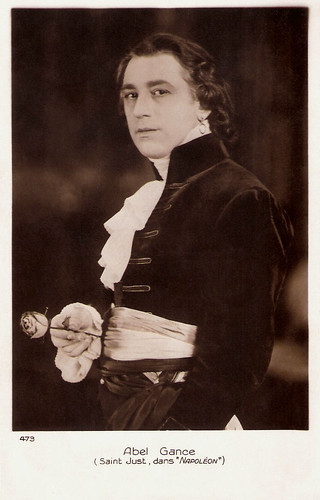
Abel Gance. French postcard by Cinémagazine-Edition, no. 473. Photo: publicity still for Napoléon (Abel Gance, 1927), with Gance himself as Saint Just.
Famous Epic
During the First World War, Joë Hamman's film acting and directing came to a halt. In 1921 he returned as an actor-director with the short adventure film Le gardian/The Rancher (Joë Hamman, 1921). In Tao (Gaston Ravel, 1923), he appeared with other pre-war actors such as comedian André Deed. He had the male lead as Chevalier de Mallory in the costume drama L’enfant roi/The Child King (Jean Kemm, 1923), opposite Andrée Lionel as queen Marie Antoinette.
The next year followed supporting parts in Le vert galant/The Don Juan (René Leprince, 1924), Les fils du soleil/The Sons of the Sun (René le Somptier, 1924), and the detective film Le stigmate/The Stigma (Louis Feuillade, Maurice Champreux, 1924) with Jean Murat.
After a break in 1925 followed six films in 1926: Sa petite/His Little Girl (Routier-Fabre, 1926), Le capitaine Frascasse/Captain Fracasse (Henri Desfontaines, 1926), La fille des pachas/The Daughter of the Pacha (Joë Hamman, Adrien Caillard, 1926), Lady Harrington (Hewitt Claypoole Grantham-Hayes, Fred LeRoy Granville, 1926), and Le berceau de Dieu/The Cradle of God (Fred LeRoy Granville, 1926).
The latter was a religious drama starring Léon Mathot in which Hamman played a triple role of Abner, Pharaoh and Confucius. After Sous le ciel d’Orient (Fred LeRoy Granville, 1927), opposite his old buddy Gaston Modot, Hamman ended his silent film career with a bit part as Baskytt in Abel Gance's famous epic Napoléon (1927).
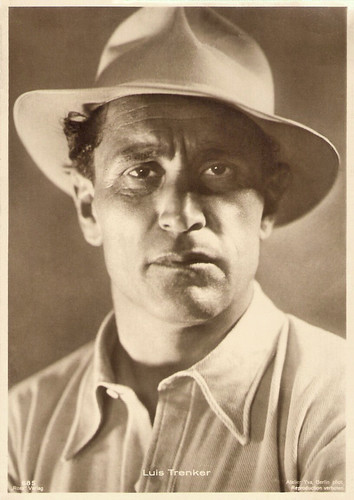
Luis Trenker. German postcard by Ross Verlag, no. 685, 1919-1924. Photo: Atelier Yva, Berlin.
For the Last Time
When sound cinema arrived, Joë Hamman made a comeback and played leads in several early sound films. He was the title character in Le roi des aulnes/The Erl KingJohan Wolfgang Goethe
He appeared in both the German version, Erlkönig, and the French version, Le roi des aulnes. Hamman also featured in Adieu les copains/Farewell Mates (Léo Joannon, 1930), and he appeared and co-directed the French version of Luis Trenker’s Berge in Flamme: Les monts en flammes/Mountain in Flames (Joë Hamman, Luis Trenker, 1931).
His parts got smaller, such as in Je serai seule après minuit/After Midnight I'm Alone (Jacques de Baroncelli, 1931), Romance à l’inconnue/Romance With An Unknown Woman (René Barberis, 1931) starring Annabella, Danton (André Roubaud, 1932), the Mistral-adaptation Mireille (René Gaveau, 1933), Le train d’amour/The Love Train (Pierre Weil, 1935), and Le clown Bux/Bux, the Clown (Jacques Natanson, 1935) starring Suzy Vernon, in which Hamman played a cowboy for the last time.
In the late 1930s, Hamman played smaller parts in four films by Henri Fescourt: L’occident/The West (1937), Bar du sud/Southern Bar (1938), Vous seule que j’aime/I Love You Alone (1939), and Face au destin/Facing Destiny (1940) with Jules Berry.
The latter film proved to be emblematically titled. France had just got involved in the Second World War and Hamman himself faced destiny too: during the war he was not offered anymore film roles. And after the war, Hamman played an uncredited role as general Kellermann in Napoléon (Sacha Guitry, 1955), starring Jean-Pierre Aumont. His only other and final performance was an uncredited part in Pop’game (Francis Leroi, 1967).
Joë Hamman died in Dieppe, France, in 1974. He was married to actress Vesta Harold, who had often appeared with Hamman in his silent Westerns. Some of his early Westerns are now on DVD. Gaumont, Le cinéma premier, II (2009) contains one disc with Jean Durand's Westerns shot in the Camargue.

Suzy Vernon. French postcard by Europe, no. 1105. Photo: Paramount.
Sources: Herve Ciret (An Indian in the Western Lighthouse), Jean-Pascal Constantin (Les Gens du Cinéma - French), Wikipedia (French) and IMDb.




